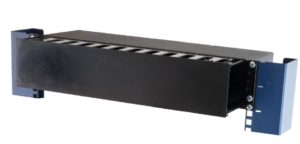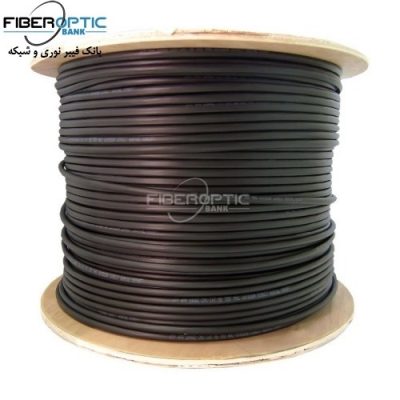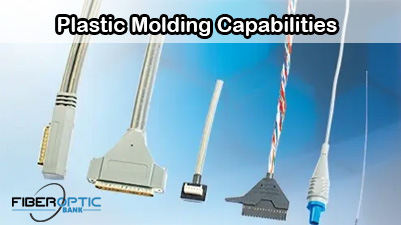What is a Patch Panel
A patch panel is a piece of hardware with multiple ports that helps organize a group of cables. Each of these ports contains a wire that goes to a different location. Patch panels can be quite small, with just a few ports, or very large, with many hundreds of ports. They can also be set up for fiber optic cables, cat5 cables, RJ45 cables, and many others.
What is a Patch Panel Used for?
Patch panels connect various IT devices together. They are in many different environments including communications closets, telephone company central offices, and data centers. Understanding the role they play can help to determine if your facility requires a patch panel, and if so, how to set it up.
Each port in a patch panel goes to a different device somewhere in the facility. Each panel bundles all the connections together in order to connect to another network. This is often how a LAN connects to a WAN, or to the Internet. Patch panels are also commonly used in facilities with a lot of telephone lines, in which one mainline is used for all phones.
Advantages of Patch Panels
Patch panels are an important piece of equipment in the data center. Using a patch panel comes with many advantages that make it well worth the investment. Some of the most significant benefits of using patch panels include:
- Scalability – After installing a patch panel, you can easily add new devices without having to run new cables end-to-end.
- Reduces Cable Clutter – Patch panels are typically located closer to the actual equipment. This makes it possible to use a shorter patch cable. From the panel, a fiber optic or other high capacity connection runs to the next network or the internet.
- Inexpensive – Patch panels aren’t considered “smart” devices in that they don’t perform any function other than facilitating the passing of data. This means they are very inexpensive.
- Lowering Cable Cost – Having a patch panel allows you to use shorter cables, which cost less than longer ones. Typically, you can also use inexpensive cat-5 cables to get to the patch panel rather than costly fiber optics.
- Easier Maintenance – If you ever need to run a test cable, test a port, or perform any other common maintenance tasks, it can be done more quickly and is much easier than if each device had a cable run to its final destination.
Patch panels are one of the oldest types of technical equipment still popular today. They are quite simple in their design and function, but still, help to improve the organization and function of a data center or almost any other environment with lots of equipment.
Patch Panel Cable Management System
With dozens, or even hundreds, of cables coming into and out of a patch panel, it can be easy for things to become quite tangled and messy. Unorganized cables can make troubleshooting much more difficult, and can even lead to outages if someone unplugs the wrong cable. This is why it is critical to keep organization in mind from the first cable you plug in. There are many things that a person can do to help keep a patch panel organized, including:
- Labeling Cables – All cables should be properly labeled at both ends, and in many cases, along the middle as well. Having labels on the cables will make it easy for technicians to confirm they are working on the right lines.
- Patch Cable Organizers – Patch cable organizers allow you to run lines neatly and evenly to each port so you can see exactly where things are coming from and going to.
- Color-Coded Cables – Using color-coded cables will allow you to quickly identify what type of cable is in each place.
- Zip Ties – Using zip ties to bundle cables that are going to the same server rack or other location will help keep things looking neat and organized.
The most important thing when it comes to patch cable management is having a good plan right from the beginning. It is much easier to spend a little extra time coming up with a good way to run your cables than it is to try to untangle hundreds of wires down the road.
6 Benefits of a Patch Cable Organizer
Anyone who has managed a data center knows that one of the biggest challenges is cable management. Depending on the size of the data center, you can have thousands of feet of cable plugging into an almost uncountable number of ports throughout the facility. Without proper care, the cables can quickly get extremely tangled.
Tangled cords are almost impossible to trace, which makes troubleshooting problems more difficult and time consuming than it needs to be. In addition, as more and more cables get added, the risk of damage to them increases. To avoid this type of problem, most data centers are using patch cable organizers.
What Is a Patch Cable Organizer?
A patch cable organizer is, as the name implies, a device that helps to organize cables. They are typically mounted inside of a server rack, and the cables run through the organizer so they are easy to follow, and look nice and professional.
Benefits of a Patch Cable Organizer

- Reduces Cable Clutter – Cluttered cables can make it difficult to reach into the servers, routers, switches, or other devices that need work. It can also make it difficult to install or remove hardware since the cables can get in the way.
- Hides Cable Slack – Keeping any extra cable slack hidden away helps your datacenter look much more professional. It also reduces the risk of a cable accidently getting pulled or damaged when working in the area.
- Professional Look – If you need to give customers or potential employees a tour of the data center, you don’t want it to look like a child ran your cabling. A patch cable organizer gives every rack a clean and professional look.
- Easier Cable Tracing – If you suspect a cable has gone bad, tracing it out will be much easier when you have every cable carefully ran through the organizer.
- Bend Radius Compliance – Patch cabling is not meant to bend at sharp angles. Using this device will help encourage a safer bend radius so your cables don’t pinch or crack.
- Improved Air Flow – Keeping the cables properly organized will help ensure the airflow within the rack is even and unobstructed. This can help protect the equipment temperature within the datacenter.
Easy Installation & Usage
Once you get this patch cable organizer, installation is a snap. It comes with all the needed hardware to mount it directly into almost any type of server rack. Once installed, cables can be easily run through and secured in place so they will be organized and protected. When it comes to keeping a data center clean, organized, and professional, few devices can provide as much benefit for as little cost as a patch cable organizer. In fact, these devices typically more than pay for themselves by reducing the number of broken or damaged cables, which can be costly in terms of diagnosing and replacing. If you’re looking for a way to keep your server racks organized, you have come to the right place.
Source: racksolution
Related products...
fiber-optic-cable
fiber-optic-cable
Shahid Ghandi 12-core fiber optic cable, (2*6), Multimode Khaki, OBUC
fiber-optic-cable















[ratings]